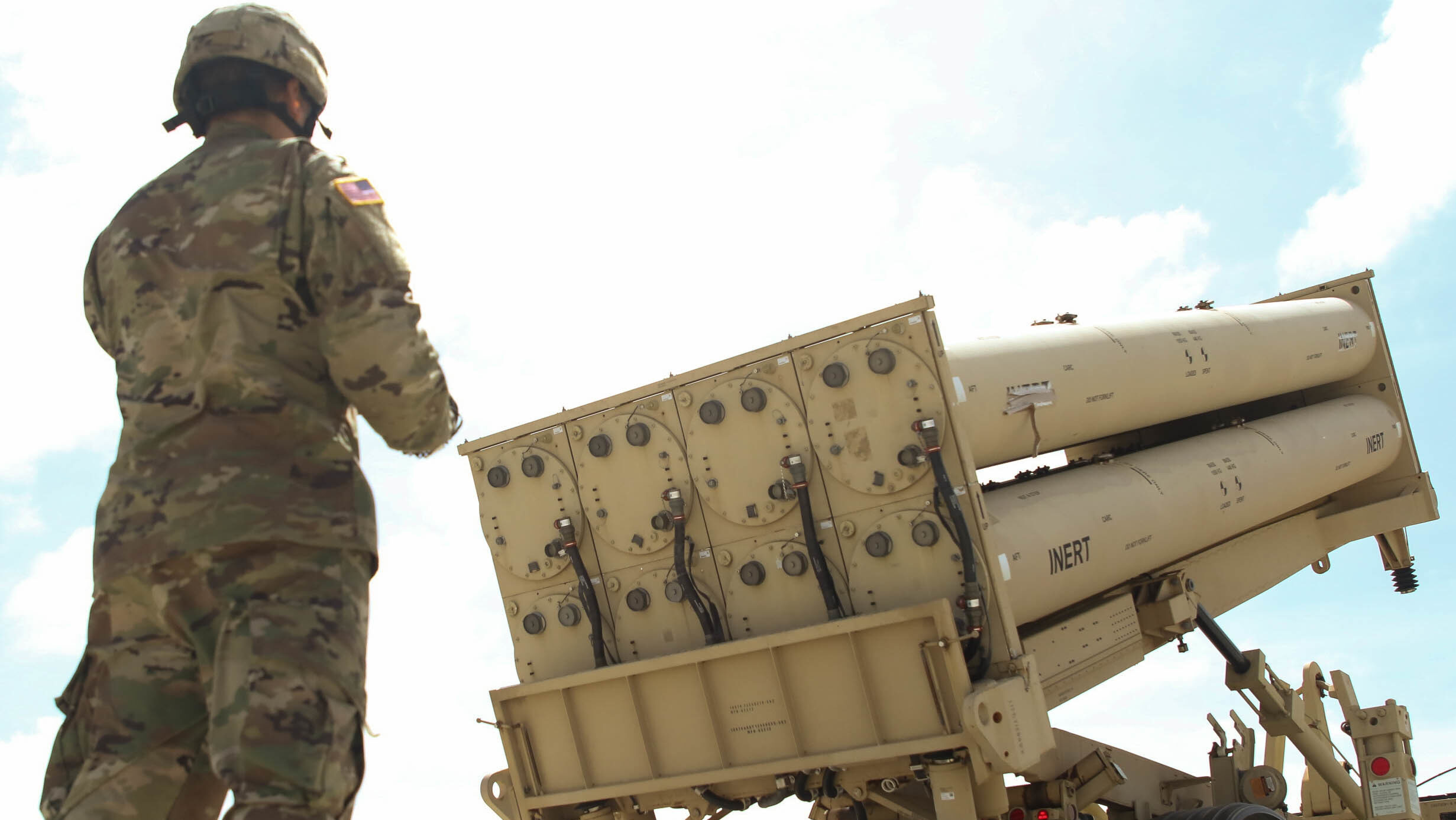
A Soldier with Task Force Talon, 94th Army Air and Missile Defense Command, observes as a missile pallet is lower, during a practice missile reload and unload drill of a Terminal High Altitude Area Defense (THAAD) system at Andersen Air Force Base, Guam, Feb. 6, 2019. (Army photo by Capt. Adan Cazarez)
WASHINGTON — If funding limits were not an issue, US Indo-Pacific Command says it could use an additional cool $11 billion next year, in part to speed up missile defense plans for Guam and buy longer-range weapons, while US Northern Command would kindly request another $35 million for IT.
Every year after the White House delivers its budget request to Capitol Hill, the combatant commands and services submit their respective “unfunded priority lists” to lawmakers. With the Pentagon’s $849.8 billion spending request for fiscal 2025 now in, at least INDOPACOM and NORTHCOM have provided their wishlists, according to news reports and documents reviewed by Breaking Defense.
Northern Command’s list has just one line item, for just under $35 million, that would funnel dollars towards a better “information environment” for several key programs including digital transformation, the Arctic Security Initiative, homeland defense, and more.
Meanwhile, INDOPACOM submitted a more detailed, nine-page, $11 billion wish list that includes 44 priority areas. The majority of those funds are directed towards regional military construction projects ($3.3 billion) and buying new weapons ($2.7 billion). Inside Defense reported the list’s delivery earlier today.
Topping that list is $430 million for the development, procurement and military construction of a missile defense system to better protect Guam against ballistic, hypersonic and cruise missile threats.
While the document does not detail just how those additional dollars could be spent, the Army is leading the charge on rolling out an evolving plan for the US territory that pulls a host of weapons from across the service, including from its own inventory a command and control (C2) system called the Integrated Battle Command System (IBCS), the Lower Tier Air and Missile Defense Sensor (LTAMDS) radar and the Indirect Fire Protection Capability Increment 2 (IFPC Inc 2) launchers.
A number of other Army initiatives are on the INDOPACOM list, including almost $391 million in procurement and development dollars for the service to move out on future increments of its new Precision Strike Missile (PrSM). Specifically, the command wants to funnel those dollars to the delayed PrSM Increment 2 that adds a multimode seeker to the baseline missile so soldiers can use it to also strike maritime targets and Inc 4 that will extend the missile range out towards the 1,000 kilometers.
An additional $573.5 million is included for the Army to accelerate development and procurement of the Maritime Strike Tomahawk, which the combatant command calls a “precision strike stand-off weapon… for attacking long range, medium range, and tactical targets.” Then there’s $152 million for the Navy and Marine Corps to continue development work on that missile line and ramp up planned buys.
The INDOPACOM list calls out the need for additional investments in several other Navy programs too, including:
- $767 million for additional Standard Missile 6 (SM-6) Block IB buys;
- $397 million for the service to accelerate Hammerhead Mine fieldings, a moored-torpedo variant mine system delivered by unmanned underwater vehicles and surface vessels;
- $124 million for a mission network that will enable INDOPACOM to “securely communicate, collaborate, plan, and execute actions with allies and partners, and modernize… [its] headquarters C4IT infrastructure;”
- $125 million for the service’s Powered Quickstrike program, a family of shallow water, aircraft laid mines used to strike surface and subsurface targets; and more.
Several Air Force and Space Force initiatives were also included on that FY25 wishlist, like $298 million for Joint Strike Missile procurement coffers, and an additional $701 million for “classified programs” designed to accelerate the development of space-based sensors “necessary to provide persistent and complete coverage of air, sea, and ground-launched missile threats.”
The new INDOPACOM list comes as lawmakers continue to grapple with plans to fund the Pentagon this fiscal year, six months into FY24 and the department is operating under a continuing resolution, and a supplemental spending request. What they decide to do with those two measures could alter department plans for FY25 too.
“We don’t start with a clean sheet of paper each year,” a senior defense official told reporters earlier this month.
“We kind of depend on having [that] ‘24 bill finish and finish in a way that looks a lot like what we asked for. Otherwise, we’re going to have to go back to the drawing board on a couple of fronts,” they later added.












